Factors influence tapioca starch processing plant yield
In tapioca starch processing plant, the yield of starch has a great relationship with the economic benefits of processing. There are many factors affecting the yield of starch, including raw starch content, processing technology, crushing size, screening degree, water quality, precipitation temperature, equipment and operating procedures. It is necessary to thoroughly understand these factors and actively take preventive measures.
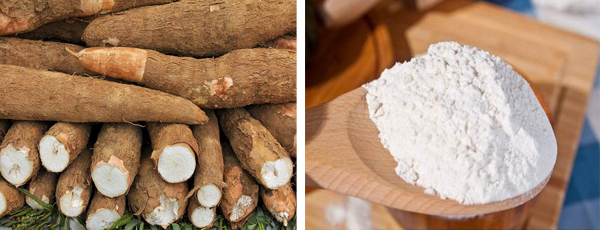 Tapioca starch
Tapioca starch
First, the impact of raw materials
The effect of raw materials on tapioca starch processing plant yield mainly includes the cassava varieties and raw materials quality.
a. Varieties---starch-specific varieties of cassava starch content is generally 22% - 26%, while edible and starch-type varieties of starch content is 18% - 22%, edible, feed-type varieties of starch content is only 10% - -20%. For some people who are initially processing starch, blindly purchasing raw materials without distinguishing the varieties will result in less starch production, lower starch yield and lower corporate profits.
Therefore, in the acquisition of cassava, it is necessary to select a variety with a high starch content. A qualified tapioca starch processing plant can establish a production base for cassava raw materials. They can signs a contract with the base, implements a unified variety, unified and standardized cultivation, and acquires products by the enterprise.
b. Quality of raw materials---If the acquired fresh raw materials are contaminated by pests, water, and frozen cassava, and with excessive amount of sticky soil, will also reduce the tapioca starch processing plant yield.
Therefore, in the acquisition process of cassava raw materials, tapioca starch processing plant must pay attention to the variety and quality of cassava, and strictly control the quality during the acquisition to ensure and improve product quality.
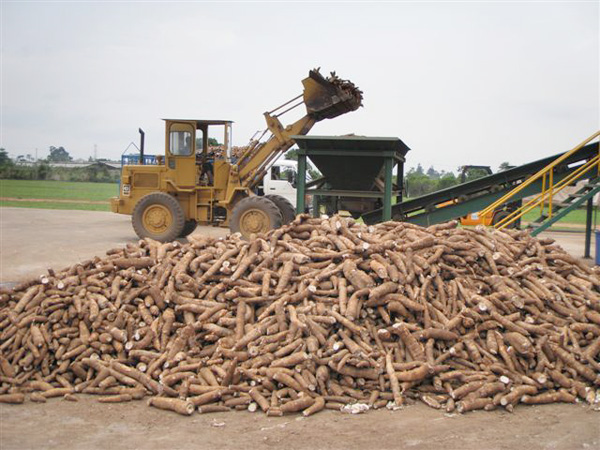 Cassava raw material
Cassava raw material
Second, the degree of cassava breaking
It is well known that cassava starch is present in cassava tuber cells, and it is necessary to crush cassava to release starch granules. If the pulverization is too coarse, the starch in the unbroken cells is difficult to separate, affecting the tapioca starch processing plant starch yield; if the pulverization is too fine, the instantaneous temperature of the raw material is likely to rise, and some of the starch is easily gelatinized, which affects the subsequent separation.
Crushing and filtration are important factors affecting the extraction rate of cassava starch in tapioca starch processing plant. Therefore, it is very important to select professional and efficient cassava crushing and sieving machine, which can help to improve the starch extraction rate and starch recovery rate. Doing Machinery has decades of starch processing machine manufacturing experience, all our cassava starch processing equipment introduce international advanced technology. DOING rasper is advanced cassava crushing equipment with crushing rate more than 94%, a good choice for you.
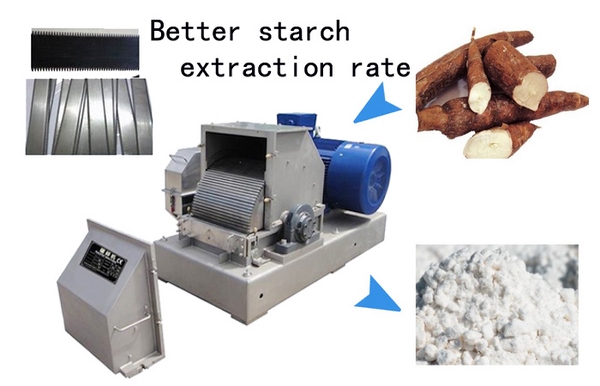 Cassava breaking rate
Cassava breaking rate
Third, the degree of clogging of the screen
Processing of cassava starch requires the separation of impurities such as fibers and proteins. These separation devices have screens. The degree of clogging of the screen has a great influence on the extraction rate of starch in tapioca starch processing plant, and it is easily overlooked by people. Protein and pectin absorb water and easily form a gel to block the mesh. In severe cases, more than 60% of the mesh holes may be blocked, which affects the separation of starch. When the clogging is light, the amount of starch extracted is reduced by 5% to -15%, and when the clogging is severe, the amount of extraction is decreased by more than 40%. Therefore, the screen should be cleaned or replaced regularly.
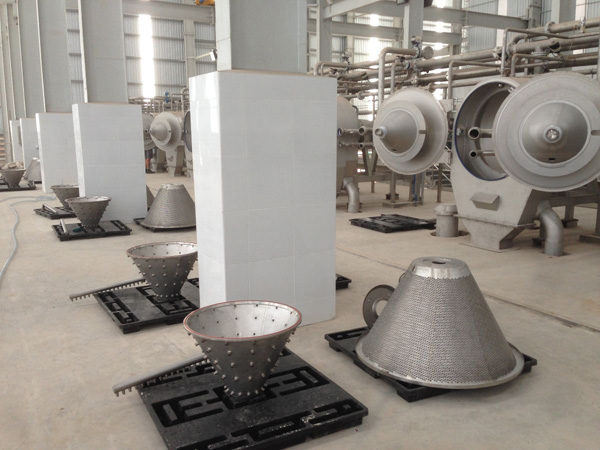 Centrifuge sieve screen
Centrifuge sieve screen
Water quality
Good water quality not only helps to increase the yield of starch, but also helps to ensure the quality of starch. On the contrary, bad water quality lower starch yield and influence starch quality.
Water and water quality issues should be considered when selecting a tapioca starch processing plant site. Starch and its products should be treated with soft water as much as possible. Generally required to be clear, colorless, odorless, tasteless, standing without sedimentation, no pathogens, no hydrogen sulfide, ammonia, nitrates and other substances harmful to humans, hardness of 15 degrees (one degree equivalent to 1 liter of water) Containing calcium oxide 10 mg) or less, the pH is preferably 6.5-8.5.
When the water quality is not good, the water should be filtered, disinfected, deodorized or softened before used in tapioca starch processing plant. In principle, the processing water should meet the water quality standards for domestic water.
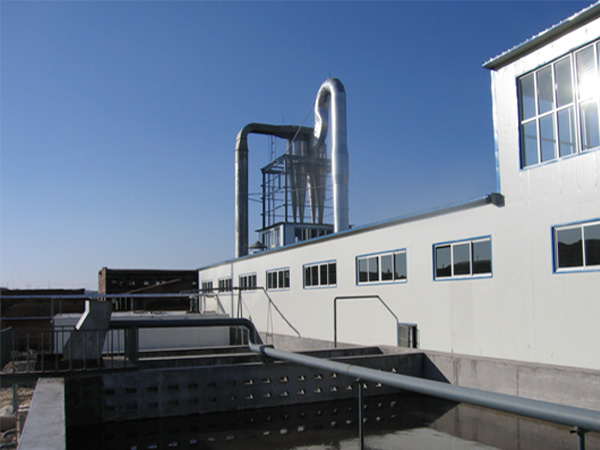 Tapioca starch processing plant
Tapioca starch processing plant
Traditional tapioca starch processing plant yield may also be affected by the following factors:
Precipitation temperature, precipitation time and human factors
In the traditional tapioca starch processing plant, there are many natural environmental factors influence the precipitation process. The temperature is high, the precipitation speed is fast; the temperature is low, the precipitation speed is slow, and the time required is long. The first precipitation time after separation of the potato residue is 4-5 hours at a daily average temperature of about 20 °C, 6-7 hours at 15 °C, and more than 10 hours at 10 °C or less.
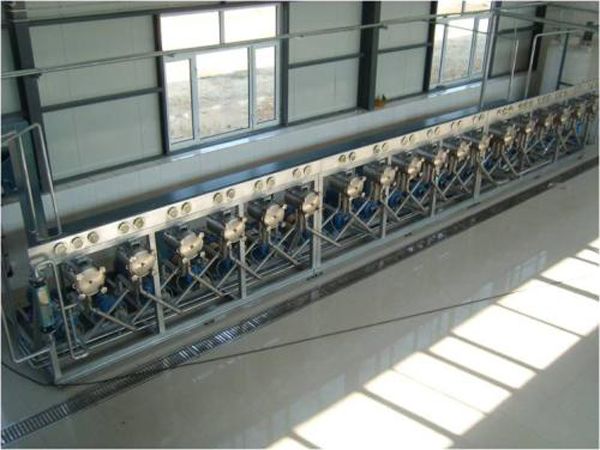 Modern full hydrocyclone station
Modern full hydrocyclone station
In the case of natural sedimentation in traditional tapioca starch processing plant, when the trough is precipitated and settled, the slurry is sometimes overflowed due to the unsatisfactory operation, which will reduce starch yield. When the slurry separation and the sedimentation of the water tank, if the starch residue in the cassava residue and the tailwater wastewater was not detected in time, and the measures were not taken in time for the pulp and slag separation, will result in low starch yield.
In the modern tapioca starch processing plant, there is no need to be limited by these conditions. The automated cassava starch processing equipment used is concentrated and refined, and the whole stainless steel material makes the work that was completed in more than 24 hours, can be completed in less than one minute. And The non-starch substances such as yellow powder, oil powder and pectin in the starch can be fully separated, the processing efficiency is improved, the manual labor is reduced, and the starch quality is improved. The whole operation is carried out according to the program set by the computer, and no human operation is required, and no waste is caused.
Leave a message
- WhatsApp:
+8613526615783
- Email:
sales@doinggroup.com
- Tel:
0086 135 2661 5783
- Phone:
0086 371 5677 1822
- Skype:
elina881130
- Address:
No.133 Yaozhai Road, Jinshui District, Zhengzhou City, Henan Province, China
-
 Cassava chips processing machine shipped to Nigeria
Cassava chips processing machine shipped to Nigeria
-
 Factors affecting the price of cassava processing equipment
Factors affecting the price of cassava processing equipment
-
 How to starct cassava production and processing business in Nigeria ?
How to starct cassava production and processing business in Nigeria ?
-
 DOING cassava starch production line successfully delivered to Nigeria
DOING cassava starch production line successfully delivered to Nigeria
-
 Cassava peeling machine shipped to Nigeria
Cassava peeling machine shipped to Nigeria
-
 What are the advantages of automatic starch production line ?
What are the advantages of automatic starch production line ?
-
 Garri processing machines and their prices
Garri processing machines and their prices
-
 New cassava slicer machine are ready to ship to Nigeria
New cassava slicer machine are ready to ship to Nigeria
-
 How profitable is garri processing business in nigeria ?
How profitable is garri processing business in nigeria ?
-
 Factors affecting the price of garri processing machine
Factors affecting the price of garri processing machine
-
 What is high quality cassava flour, how to produce high quality cassava flour ?
What is high quality cassava flour, how to produce high quality cassava flour ?
-
 How to process cassava into cassava chips ?
How to process cassava into cassava chips ?
-
 Cassava starch manufacturing process
Cassava starch manufacturing process
-
 How to maintain cassava starch processing equipment ?
How to maintain cassava starch processing equipment ?
-
 How to extract cassava starch ?
How to extract cassava starch ?
-
 How to make cassasva starch?
How to make cassasva starch?
-
 Water, electricity, steam and land deploy in starch processing plant
Water, electricity, steam and land deploy in starch processing plant
-
 How profitable is cassava starch made?
How profitable is cassava starch made?
Leave a message

Tel/Whatsapp:
+8613526615783



